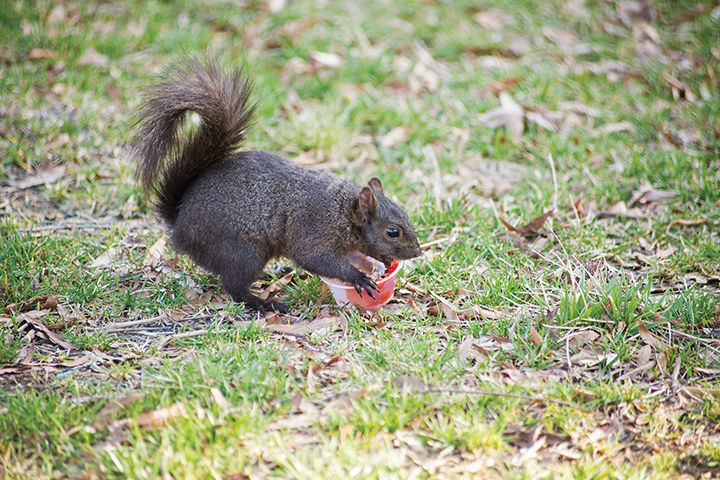
A black squirrel, seen on McKeldin Mall.
My family wasn’t like most at Family Weekend this past fall. While other parents took photos of the sunset on McKeldin Mall or the packed seats in Byrd Stadium, my family snapped photos of every black squirrel that scurried across the campus.
We got some weird looks from folks who were fortunate enough to have been graced by the presence of the black squirrel their entire lives, but my family is from Virginia, and we’ve only been blessed by the presence of the Eastern gray squirrel.
The first time I saw a black squirrel on the campus, I was confused. Mystified. Taken aback by its existence. Everything I thought I knew about squirrels (which is, admittedly, very little) had been called into question.
The squirrels at the University of Maryland are unprecedentedly fearless. I’ve had at least two encounters with squirrels that I’m fairly sure would have ended in vicious attacks if I hadn’t run away at the very last second. But the black squirrels were a different story entirely: Where did they come from? Why had I never heard of them before I started college? Did they have some sort of special squirrel superpowers? Were there racial tensions between the different-colored squirrels? I had way too many questions.
According to The Washington Post, the black squirrel and the gray squirrel are actually the same squirrel — the only difference between them is their color. The black squirrels just possess a recessive color gene.
Black squirrels are thought to have originated in Canada, but arrived in Washington in 1902, when Canada decided we needed a little squirrel diversity and shipped eight black squirrels to the National Zoo. The zoo decided that the little guys were cute enough to stay, so they released them into the zoo. A second order of black squirrels arrived four years later and thrived in the area through repopulation.
I still had some more questions though: Why are black squirrels so prevalent in this state but completely absent from Virginia?
I decided the only thing left to do was to consult a squirrel expert. I emailed John Koprowski, a professor of wildlife and fisheries science at the University of Arizona, with some of my questions.
“Black forms of the Eastern gray squirrel are more common as you go north,” he wrote. “The black fur provides a documented energetic advantage in winter. The coloration is genetically based and thus can persist in populations and become common in local areas.”
So, there you have it. The elusive black squirrel isn’t all that elusive after all, unless you spend more of your time in the southern region of this country.
But that won’t stop me from pulling out my phone and taking pictures every time I see one.



